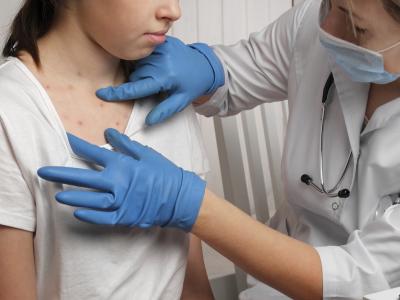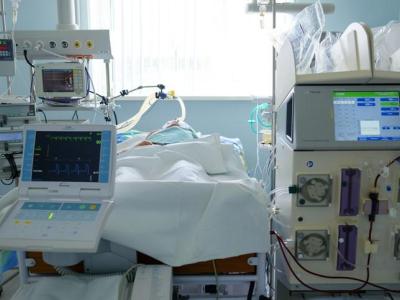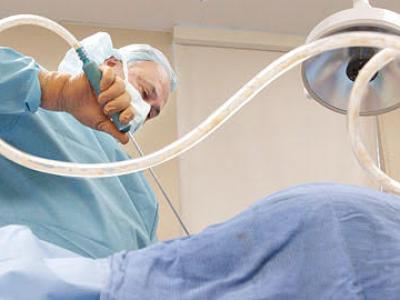Our weekly wrap-up of antimicrobial stewardship & antimicrobial resistance scans
Barriers to antibiotic stewardship at hospital discharge identified
Five barriers to better antibiotic decision-making at hospital discharge emerged after John Hopkins University School of Medicine researchers interviewed healthcare workers and discharged patients.
For the study, which was published yesterday in Infection Control and Hospital Epidemiology, the researchers conducted semistructured interviews with 37 healthcare workers and 16 discharged patients at a tertiary care hospital in Baltimore, Maryland. Their aim was to better understand antibiotic decision-making during the hospital-to-home transition and, how discharged patients manage their medication after leaving the hospital, and to identify barriers and strategies for improving discharge stewardship.
Most antibiotic courses initiated in hospitals are completed by patients after discharge, and previous research indicates that more than half of discharge prescriptions are of excessive duration, overly broad, or unnecessary.
The five main barriers identified through analysis of the interviews were (1) clinician perception of patient expectations for antibiotics, (2) diagnostic uncertainty, (3) a hierarchical culture led by the attending physician versus a multidisciplinary culture, (4) not accounting for in-hospital antibiotics when calculating the total antibiotic duration for discharged patients, and (5) organizational pressure for early discharge prior to the return of clinical and microbiologic data.
To address these barriers, the authors suggest that antimicrobial stewardship programs target hierarchical structures, differences in service cultures, and diagnostic uncertainty, and that the antibiotic decision-making system should account for the total duration of antibiotics to avoid prolonged courses of therapy.
"Implementation of targeted interventions can result in more effective outcomes for antibiotic use at the hospital-to-home transition," they wrote.
Jan 21 Infect Control Hosp Epidemiol abstract
US Candida auris cases continue to climb
The number of confirmed and probable cases of Candida auris infection in the United States has risen to 1,625, according to an update this week from the Centers for Disease Control and Prevention (CDC).
Of the cases reported to the CDC as of Nov 30, 2020, 1,595 (98.2%) have been lab-confirmed and 30 (1.8%) are probable. An additional 3,172 patients have been found to be colonized with the multidrug-resistant yeast, as determined by targeted screening in 19 jurisdictions.
The number of states affected stands at 23, with New York (681), Illinois (411), New Jersey (202), California (117), and Florida (106) reporting the vast majority of cases. While many of the cases have been reported in long-term care facilities, the CDC notes that increased spread of C auris has been observed in acute care hospitals during the COVID-19 pandemic.
Since C auris was identified in 2009 in Japan, outbreaks have been reported in 31 countries, and 14 countries have reported single cases. C auris can cause serious invasive infections in immunocompromised patients, and it has shown resistance to three major antifungal drug classes. The CDC estimates that the mortality rate is anywhere from 30% to 60%.
Jan 19 CDC update
University of Oxford to launch new AMR research institute
Originally published by CIDRAP News Jan 19
The University of Oxford announced today that it has received £100 million ($136 million USD) from the chemical manufacturing company Ineos to launch a new institute to study antimicrobial resistance (AMR).
The Ineos Oxford Institute for AMR Research will focus primarily on developing new antimicrobial drugs, particularly novel drugs just for animals. Scientists at the institute will also contribute to research on the type and extent of drug-resistant microbes across the world, and promote responsible use of antimicrobials in human and animal medicine.
"Just as the discovery of penicillin and subsequent antibiotics transformed modern medicine, the rapid and relentless growth of antimicrobial resistance poses one of the most serious threats to human life worldwide," Oxford professor of medical microbiology Tim Walsh, PhD, said in a university press release.
"Modern agriculture and healthcare both heavily reliant on antibiotics, which is why it is vital to address this issue as a humanitarian emergency and to bring together national and international expertise across scientific disciplines to develop new drugs and policies to tackle this global problem."
The institute will be based in the University of Oxford's departments of chemistry and zoology.
Jan 19 University of Oxford press release
Intense stewardship, infection control tied to less antibiotic ICU use
Originally published by CIDRAP News Jan 19
Implementation of intensive antimicrobial stewardship strategies and monitoring of infection prevention and control practices were associated with a reduction in antibiotic use in the surgical intensive care unit (ICU) of an Indian hospital, researchers reported yesterday in the Journal of Global Antimicrobial Resistance.
The study, conducted by researchers with the Postgraduate Institute of Medical Education and Research in Chandigarh, India, compared antibiotic use in the hospital's ICU surgical recovery unit from April 2017 to June 2017 (the baseline period) with antibiotic use from July 2017 to December 2017 (the intervention period).
During the baseline period, routine prospective audit and feedback of antibiotic prescribing was conducted, per the hospital's antimicrobial stewardship program. For the intervention period, additional stewardship interventions, including antibiotic timeouts, dose optimization, and small training sessions on rational antibiotic use were implemented, along with a bundle of measures for preventing healthcare-acquired infections.
A total of 337 patients were included in the study, with 94 observed in the baseline phase and 243 in the intervention phase. Comparison of the two periods showed a decrease in the days of therapy per 1,000 patient-days (1,112.3 days in the baseline period vs 1,048.6 days in the intervention period) and the length of therapy per 1,000 patient-days (956 vs 936.3 days). The cumulative defined daily doses per 1,000 patient-days for all antimicrobials also fell (1,326.3 vs 1,313.5). Double cover for gram-negative infections was noted in 9.5% of total patients in the baseline phase, compared with 2.9% of patients in the intervention phase.
The analysis also found that the incidence of ventilator-associated pneumonia per 1,000 ventilator-days declined from 46.4 to 35.4, while central line–associated bloodstream infections per 1,000 central line–days remained the same (14.7 vs 14.8).
The authors of the study say the findings, though limited, could be applicable to ICU surgical recovery units in other developing countries with limited resources.
Jan 18 J Glob Antimicrob Resist study












